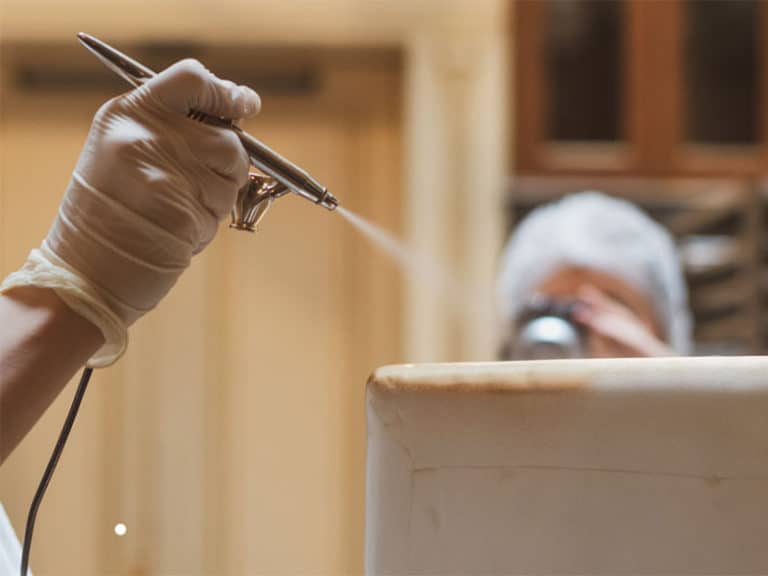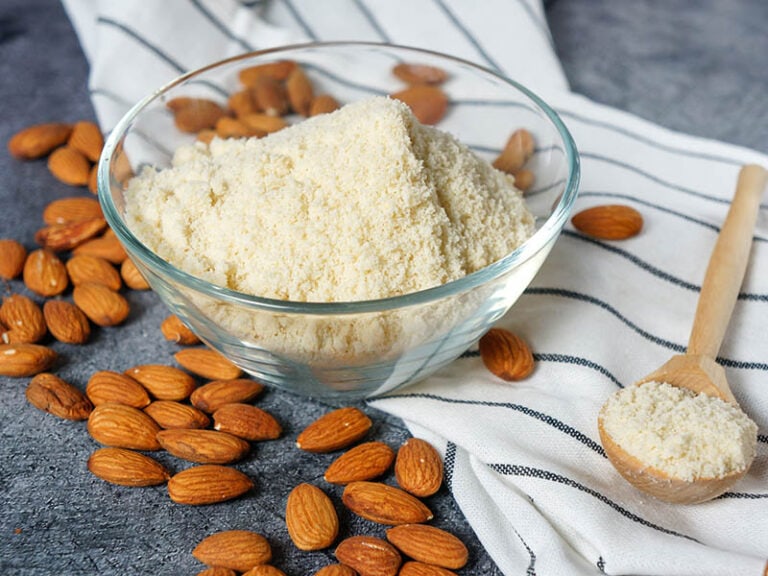While shopping around the meat deli, I’m sure many of you have come across the “uncured” label and wondered: “What does uncured mean?”.
Well, to put it shortly, this is the term which shows how the meat was preserved. Despite being consumed massively, still, whether you should buy cured or uncured meat remains a confusion for a lot of people.
In this blog post, I’m going to explain to you thoroughly about uncured and cured meat, as well as the difference between them and which one you should purchase.
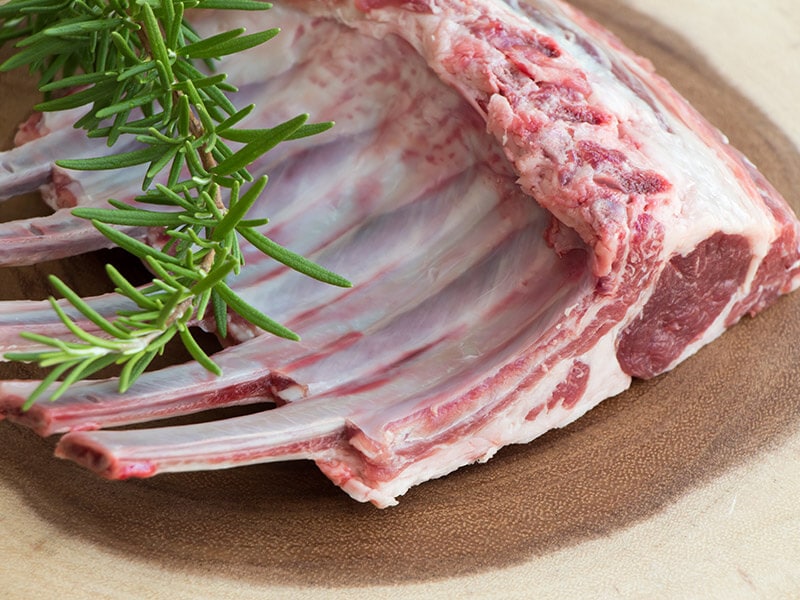
What Does Uncured Mean?
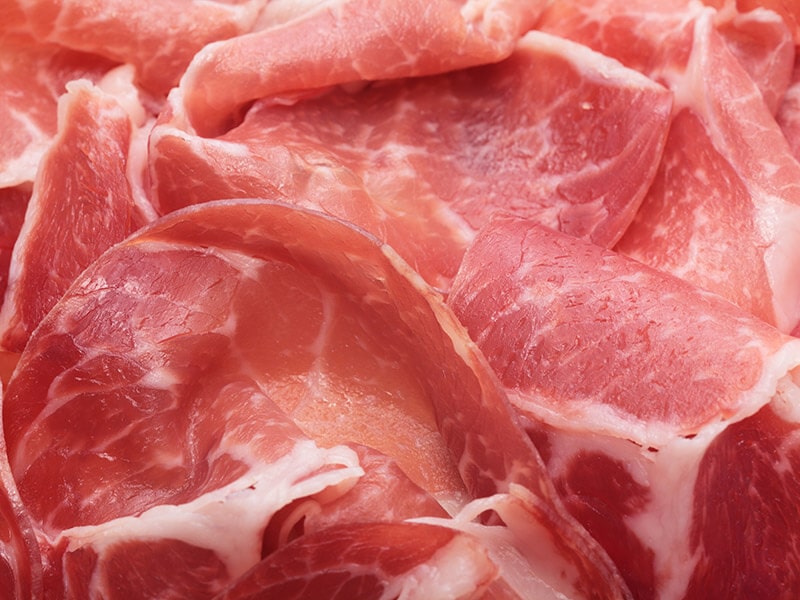
There’s always a certain amount of moisture inside the meat. While this helps to keep the meat tender, it is also an ideal environment for bacteria to thrive.
To maintain the meat’s longevity for a certain period, the meat must be processed through some kind of preservation techniques, such as smoking, drying,.. with a combination of salt and preservatives to drain out the water retention, which is called “curing”.
The term “uncured” refers to the process in which the meat is preserved with natural preservatives, such as celery powder, celery juice, beet extract, sea salt,…or some other curing agent which turns into nitrates when it is converted.
Contrary to how it’s called, uncured is cured. But instead of using artificial preservatives (sodium nitrates), this kind of meat + (type of meat) is added with natural curing agents. After a certain time, the nitrification process occurs itself.
More often than not, you will come across uncured meat which are labeled “no additional nitrates and nitrites”. This means the meat has been naturally preserved (and still contains nitrates, as explained above) and should be noted accordingly as required by The United States Department of Agriculture (USDA).
Common Types Of Uncured Meat
Most common types of uncured meat that you can easily find in supermarkets and butcher shops:
Uncured Ham
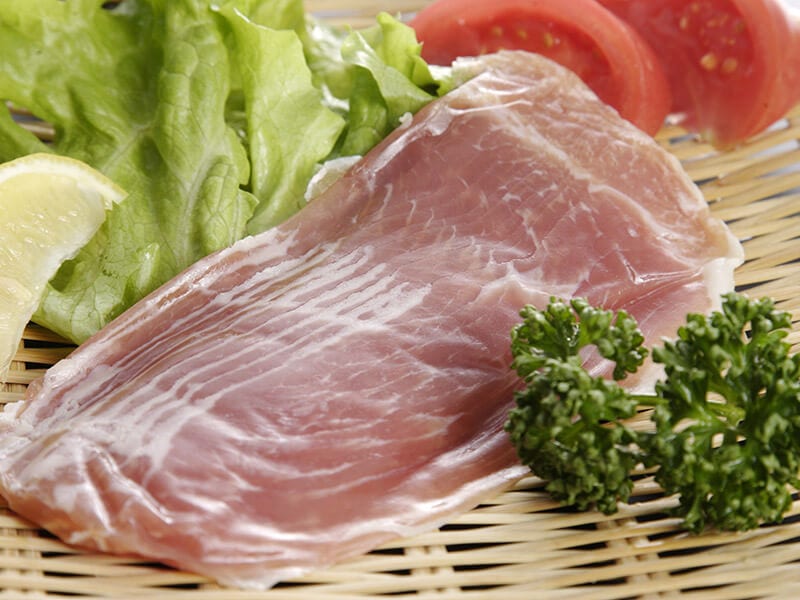
Similar to cured ham, uncured ham is also made from the meat on the behind of a pig’s legs. Uncured ham isn’t injected with chemicals like brine and other substances, so it retains a lighter pink color.
Uncured Bacon
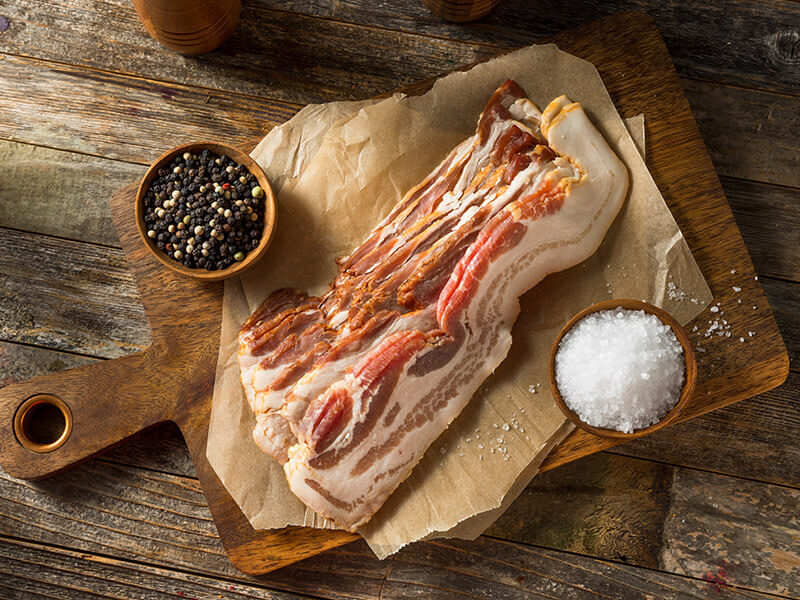
Unlike cured bacon being preserved with sodium nitrites, uncured bacon is the bacon variety + (type of bacon) that is preserved with celery in powder or juice consistency, pure sea salt, and some other veggie curing agents.
Uncured Salami
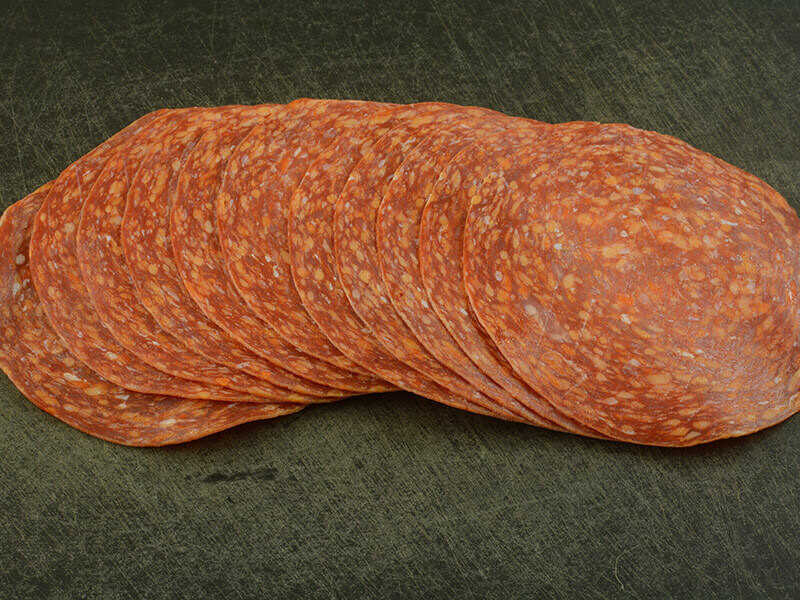
Contrary to many assumptions, uncured salami contains just the same amount of nitrates as cured ones and should be treated (cooked and preserved) similarly.
Uncured Hot Dogs

Even though they don’t contain synthetic preservatives, uncured hot dogs are still high in fat and sodium and should be consumed with consideration.
Is Uncured Meat Safe To Eat?

Even though uncured meats are still “raw”, they have already had their bacteria eliminated through the curing procedure, so they are completely safe to eat.
However, the content of sodium is considered to be pretty high due to the salt and curing agent compound. You may need to adjust your daily uncured meat consumption if lowering salt intake is your diet goal in the meantime.
What Is Cured Meat, Then?

If you’re a fan of sipping a glass of wine with some cold cuts once in a while, you may know that most of the time, cold cuts are cured meat.
Cured meat is processed through osmosis with additives and synthetic nitrate agents to remove the natural moisture from which harmful bacteria may be produced.
Cured meat is ready to eat right away since they have been processed with artificial preservatives: sodium nitrate, sodium nitrite, chemical brine, etc., to eliminate bacteria and prevent the meat from contamination.
Before the invention of refrigerators, this curing method was applied to protect the meat from spoiling for a long period of time. In addition, it helps the meat to have a richer salty flavor.
Curing meat has been a thing since ancient times.
Common Types Of Cured Meat
Most of the delis you find in the butcher shops are cured meat. There are numerous dishes I can count that feature at least one kind of cured meat: sandwiches, pizzas, eggs benedict,…
Here are some of the most common types of cured meat at the stores:
- Prosciutto
- Pepperoni
- Salami
- Pancetta
- Bacon
- Lardo
- Cervelat
- Chorizo

Cured vs. Uncured: The Differences
Now that you’ve learned the basics of these two delis, let’s jump into a little comparison so that you can acknowledge the difference.
Origin
According to some historical documents, the method of curing meat was invented in 3000 B.C in Mesopotamia. Due to food scarcity, people marinated fish and meat with a mixture of salt and sesame oil, then let it dry for preservation.
About 200 B.C later on, this technique was elevated by the Greeks (salt curing method), thus widely applied all over the Roman Empire.
Until the refrigerator’s invention in the 19th century, the curing method remained to be the most effective in preserving meat, fish, and vegetables.

Texture
In terms of texture, cured meat has a firmer texture than uncured meat because it is “cured” with chemical brine and other synthetic additives.
Uncured meat consists of 70-80% water content which makes it more tender.
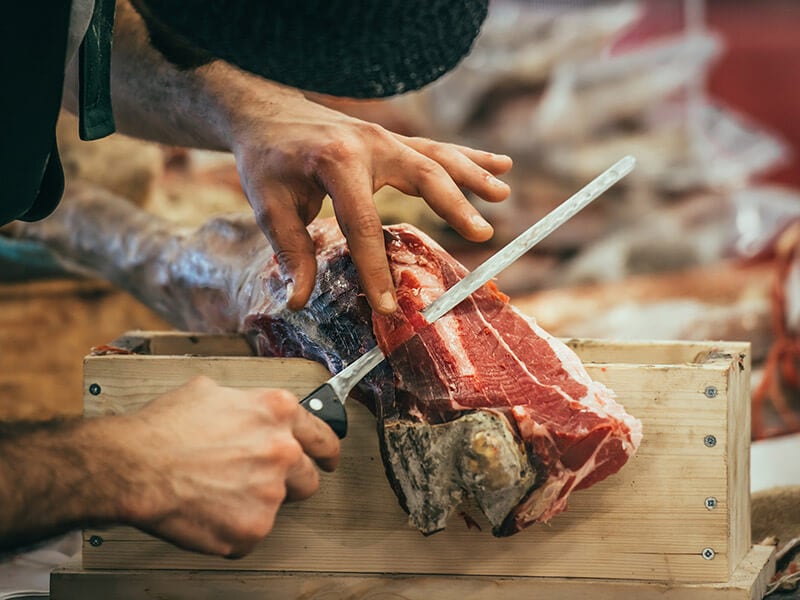
Color & Taste
In terms of flavor, cured and uncured meat tastes typically the same. On a few occasions, uncured meat may taste a little saltier due to the high salt and sodium content.
Cure meat, on the other hand, is packed with sophisticated aromas thanks to the herbs used in curing procedures (red currants, sage, sloe, and cranberry,..).
Color-wise, cured meat is added with a mixture of 1% salt and synthetic nitrates which results in brighter pink color (the result of chemical reactions between myoglobin in the meat and sodium nitrite).
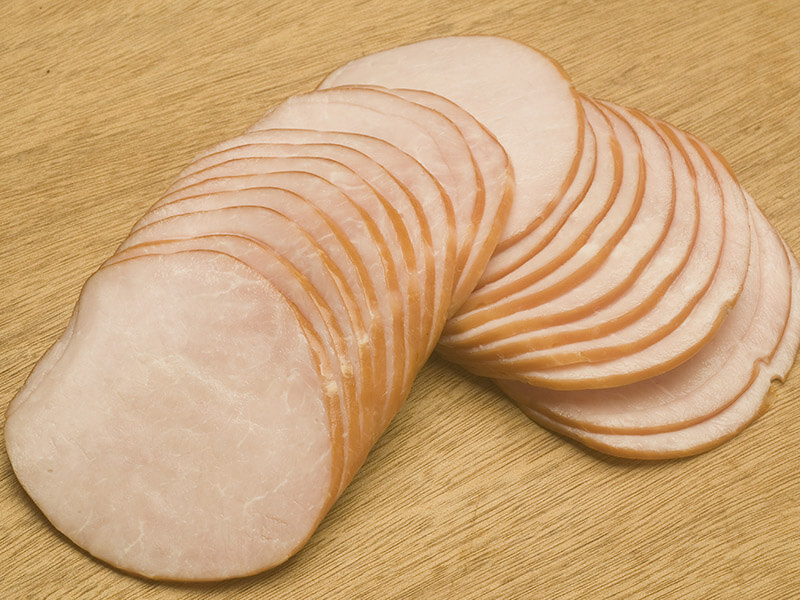
Shelf Life
Keep in mind that both uncured and cured meat can last pretty long on a shelf as long as they’re conserved properly.
As for the higher ratio of nitrite, cured meat has a longer shelf life. Uncured meat can last for 1 week in the refrigerator and up to 6 months in the freezer, while cured meat lasts for 2 weeks in the refrigerator and up to 1 year in the freezer.
For more specific information, you should read carefully on the package or ask the butcher at the meat deli.
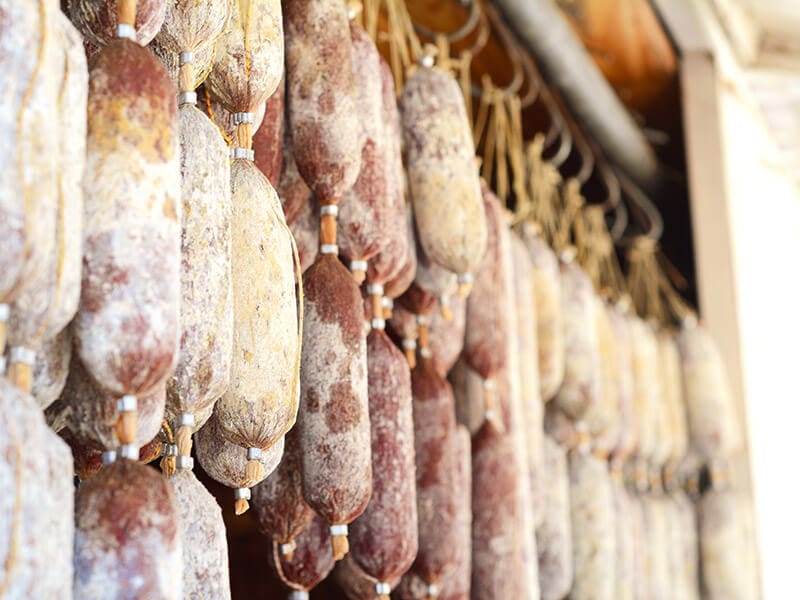
Sodium
Uncured meat contains a higher sodium content than cured meat to prevent spoilage. If you’re considering a lower-sodium diet, it is advised that you should lower (or completely remove) uncured meat from your daily meals.
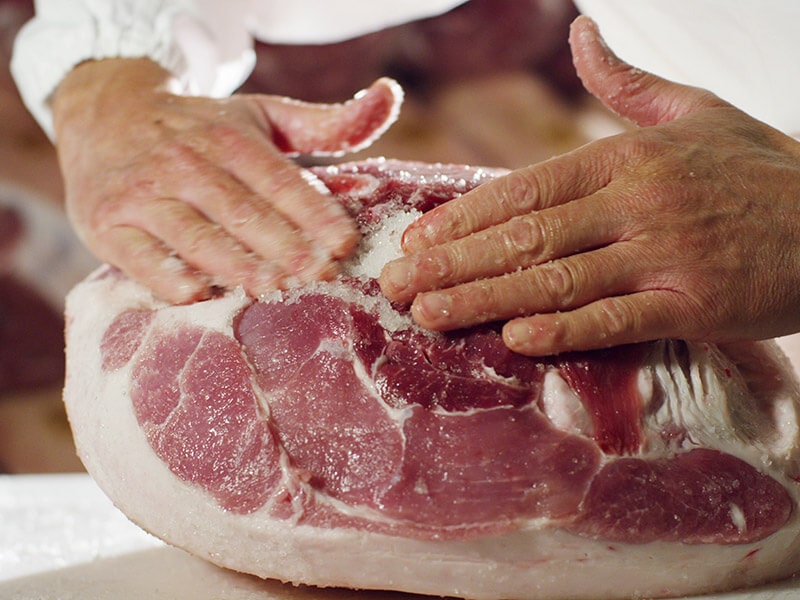
So, Which Is Healthier?
Here comes the most controversial question: Which one is healthier? Cured or uncured meat?
For such a long time, delis (especially cured meat) have received a bad rap in the food industry for the potential of increasing heart diseases, stroke and type 2 diabetes. (1) Not just because of the preservatives and the salt itself, coloring agents contribute to a specific part of causing harmful effects on health.
As a result, people often grasp onto the belief that “Natural is healthier all the way” and assume that uncured meat seems to be a better choice since they’re often labeled as “no nitrates and nitrites added”. But in this case, you may want to examine it further.
Research has shown that the amount of nitrates in uncured meat is equivalent to cured meat (2). The only distinction here is that the preservatives originated from natural sources, but there is no evidence that nitrates from celery are any less harmful than those from synthetic ones.
The “uncured” or “no nitrites/nitrates added” label is more advantageous for marketing and selling purposes, rather than consumers’ health benefits (not to mention it’s pretty misleading).
Generally, uncured meat contains a higher level of sodium (due to a large amount of salt), and cured meat is preserved with synthetic additives.
This makes uncured meat a better choice for people who are reluctant with the term “chemical” and prefer foods that are made with natural ingredients. However, cured meat should be on your go-to list if lowering sodium intake is now your priority.
It won’t hurt anyone if you enjoy a plate of cold cuts or a favorite sandwich variety + (type of sandwich) like smoked turkey sandwich from one time to another, but consuming them daily is another story.
That being said, it’s important that you consult your trusted doctor or nutritionist in case of pregnancy, heart condition, or blood pressure.
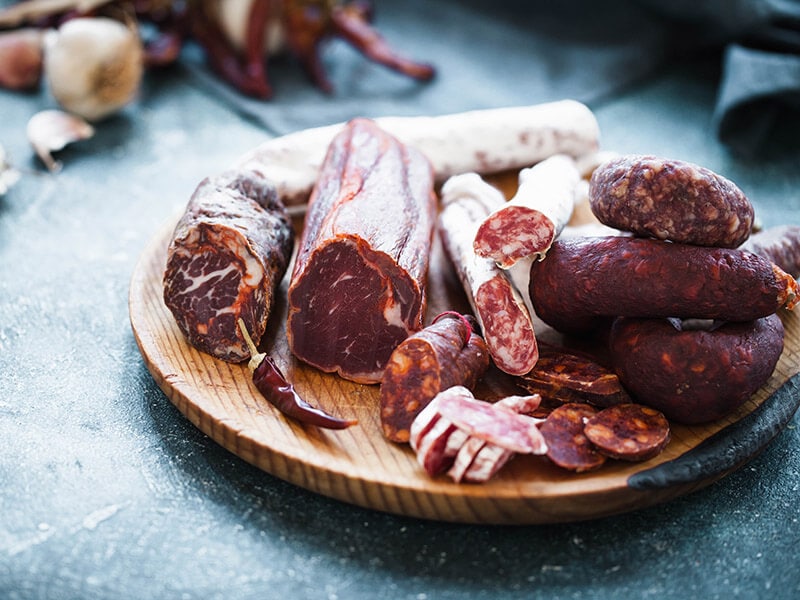
Pros & Cons Of Uncured Meat
Let’s finish up with a quick review. Just like anything else, uncured meat has its good & bad traits.
Before jumping to the conclusion about whether you should buy uncured meat, take a look at this table:
Common Meat Curing Methods
For ages, curing meat has been applied all over the world as a method of preserving food, especially during difficult times and when food is scarce. Let’s take a look at the 3 most common meat curing techniques.
Dry Curing
As the most ancient meat curing technique, dry curing involves rubbing a combination of sea salt and other natural seasonings, herbs, and spices, then letting the meat “cure” itself after an extended period. No water or any kind of liquid is implicated.
Best for: bacon, ham, pancetta, and prosciutto.
A complete guide to executing the dry-curing method at home so that you can enjoy your meat without a doubt.
Wet Curing
Also known as brine curing, this method is similar to making a pickle liquid mixture. The brine curing execution involves soaking (or injecting) a brine solution into the meat.
It’s important that you make sure the meat is completely submerged before placing it in the refrigerator to perform the curing process.
Best for: turkey, chicken, pork, and bacon.
Thought that you could never brine ham by yourself? The video below will show you that anything is possible!
Combination Curing
Simply put, this method is a combination of the two methods above: injecting a curing solution into the meat before covering it up with a layer of dry salt. Finish the process by putting it in the fridge.
Best for: storing the meat for an exceptionally long time, maintaining the meat’s freshness and flavor.

Best Brands Of Uncured Meat
Despite not being in the field for too long, uncured meat has gradually become the choice of many consumers who are meat lovers but not so much a fan of chemical additives.
Here are the best brands of uncured meat available on the market.
Coleman Natural Applewood Smoked Uncured Bacon
Using cultured celery powder, Coleman’s smoked uncured bacon is an all-time bestseller and simply delicious. Including bacon in your breakfast recipe + (bacon breakfast recipes) is a good idea.
With Coleman Natural Smoked Uncured Bacon, not only you’re getting the most crunchy bacon slices, but also peace of mind knowing that there’s nothing on your plate that doesn’t come from Mother Earth.
Tender Belly
Made from vegan-raised Heritage pigs and a free-living environment (yes, no crates at all!), this promises to be bacon you’ve never experienced before.
Smithfield All Natural Uncured Bacon
Get the most authentic, high-quality bacon strips from Smithfield All Natural Uncured Bacon to level up your breakfast game. Made with only 5 ingredients, this product’s premium flavor can enhance any of your meals.
Wellshire Black Forest Uncured Bacon
Would you rather enjoy your bacon from pigs that were raised humanely? If so, you’re in the right place.
This Wellshire Black Forest Uncured Bacon can ensure you with 5 Nos: no antibiotics, no nitrates, no nitrites, no preservatives, and no animal cruelty.
And how about 1 yes: mouth-watering, sweet & salty bacon slices, unlike anything you’ve tried!
Nature’s Rancher Applewood Smoked Uncured Bacon
Ask your mom or your grandma what their favorite bacon brands are, and this probably would be on the top of their lists.
Traditional, minimal processing, no antibiotics, and synthetic preservatives,…can it get any better? This Nature’s Rancher Applewood Smoked Uncured Bacon is packed with a flavorful, smokey taste that can make any of your delicious breakfast recipes + (breakfast recipes) smoking hot!
Plus, it’s free of gluten, lactose, and MSG – so you’re getting the whole package: simple, delicious, and healthy.
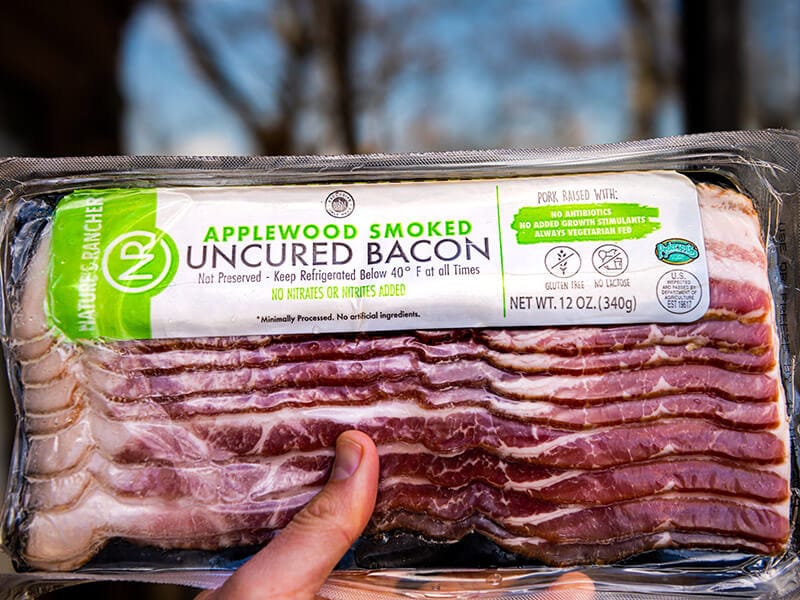
Best Uncured Meat Recipes
You can show off your cooking skill with these uncured meat recipes. They’re quick, easy to make and the taste is just as great as cured meat.
Keto Maple-Mustard Glazed Ham
Golden and glossy on the outside, juicy and a burst of flavors on the inside – just thinking of this maple-mustard glazed ham can make anyone hungry! This dish is a perfect main course for holidays, parties, and family reunions.
Black Pepper Maple Candied Bacon
Who said that you could only make candy for desserts? This “candied” bacon is a win-win combination between salty, sweet, and super crispy that can be added to pretty much anything you’d like: salad, pasta, sandwiches, etc., or just perfect on its own.
Gluten-free Uncured Bacon Wrapped Asparagus
If there’s anything better than a gluten-free bacon dish, it’s gluten-free uncured bacon. This recipe only takes you 7 ingredients and 20 minutes to make a decadent lunch or can also be a gourmet side dish for dinner.
FAQs
After having learned about uncured and cured meat, I’m pretty sure you still have some wonderings on this subject. Don’t we all want to make the best choice for our health?
Let’s dive right into some FAQs.
A Little Reminder
As mentioned above, uncured meat is processed with natural curing agents (as celery powder is the most popular one). This makes uncured meat a better option for someone who is concerned with cutting down chemical additives intake.
That being said, uncured meat is still composed of nitrates and a lot of salt. A moderate portion for once and a while would be just fine.
If you find this blog post helpful, please like and share. Still confused? Don’t hesitate to leave a comment below!
References
- consumerreports.org. 2019. Danger At The Deli [Online]. Available at <https://www.consumerreports.org/deli-meats/danger-at-the-deli-cold-cuts-increased-risk-cancer-heart-disease/>
- npr.org. 2019. Duped In The Deli Aisle? ‘No Nitrates Added’ Labels Are Often Misleading [Online]. Available at <https://www.npr.org/sections/thesalt/2019/08/29/755115208/duped-in-the-deli-aisle-no-nitrates-added-labels-are-often-misleading>


